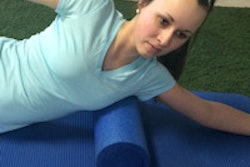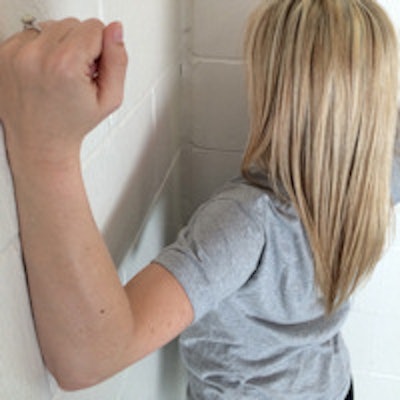
Just because you don't play tennis or racket sports doesn't mean you can't come down with tennis elbow, also known as lateral epicondylitis. A painful condition caused by overuse, tennis elbow can be triggered by repetitive movements on the job, such as the daily work of a sonographer.
In those with the condition, the tendons that join the forearm muscles on the outside of the elbow become inflamed. The forearm muscles and tendons become damaged when the same motions are repeated again and again. This leads to pain and tenderness in the area of the elbow.
Many times, we only look at the forearm and elbow area to help relieve the pain. These areas, indeed, can be the cause of problem, but we also need to go a step further and take into account the wrist, the entire arm, and even the whole body.
We need to make sure that the neck and scapula (shoulder blade) are moving correctly and not leading to problems in other parts of the body. Even though the symptoms are in the elbow, the culprit causing the pain could be in a different area.
Folks tell me all the time that they use a brace to help relieve the elbow pain. That's great, but keep in mind that while a brace centered over the back of your forearm could help relieve symptoms of tennis elbow, it might not fix what's causing the problem.
Training and stretching exercises can accomplish that goal. First, though, here's how to tape the forearm to help secure the muscle in a position to relieve pain while working and doing corrective exercises (figures 1, 2, and 3). This can reduce symptoms by resting the muscles and tendons that are being overworked.
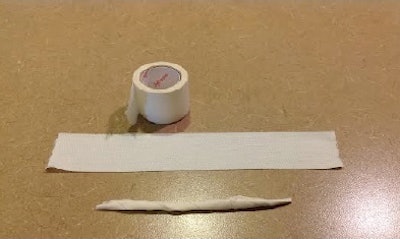 Figure 1: Tape to use for bracing. All images courtesy of Mark Roozen and Doug Wuebben.
Figure 1: Tape to use for bracing. All images courtesy of Mark Roozen and Doug Wuebben.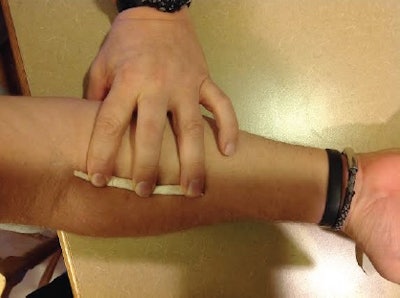 Figure 2: Roll some of the tape and place it on the thumb side of the forearm.
Figure 2: Roll some of the tape and place it on the thumb side of the forearm.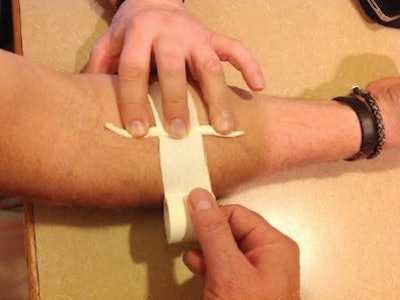 Figure 3: Place tape around the forearm.
Figure 3: Place tape around the forearm.Keep in mind that this doesn't stop the cause of the pain; it just gives some relief. To stop the pain and to remain pain-free, do some of the following training exercises for five to 10 minutes, two or three days a week. You don't have to do all of the exercises presented here and those to come in part 2; pick one or two for day 1, and then one or two more for the next training day.
The first two exercises are mobility and stretching exercises.
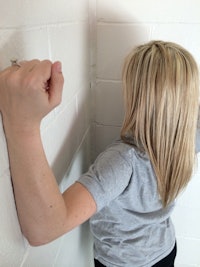 Figure 4.
Figure 4.Mobility/stretching
Corner stretch
The corner stretch will improve mobility of the shoulders and flexibility of the upper back and shoulders. To begin, stand in a corner and bend your arms to 90°. Place your hands, forearms, and elbows on the wall, with your left arm on the left wall and right arm on the right wall (figure 4). Slowly lean your upper body into the wall, working to bring your chest into the corner (do not lead with your head/nose).
Make sure that the upper arms are out straight from the shoulders and that they are not positioned too high on the wall. The arms should be at 90° angles. Next, move up the wall to 45° angles and repeat, leaning into the corner while leading with the chest (figure 5).
After that, move up the wall with your hands, extending your arms above your head. Again, lean into the corner with your chest.
Finally, work your way back down to the 90° position.
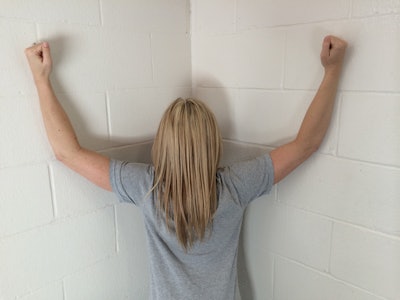 Figure 5.
Figure 5.Doorjamb grab
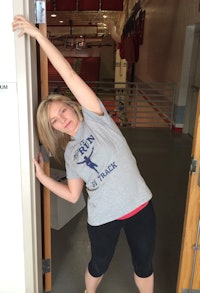 Figure 6.
Figure 6.The doorjamb grab will improve mobility of the shoulders, back, and core and also flexibility of the entire back and shoulders.
Begin by standing in the middle of the doorway. To stretch the left side, bring your right elbow to your side and brace your right hand against the doorframe. Reach your left arm over the top of your head and grab the doorjamb (figure 6).
As you lean away from the doorjamb, pushing your hips away, work to keep your right hip forward; try not to let it drop back. Hold for 20-30 seconds and then repeat the stretch on the other side.
In our second article on tennis elbow, we'll show you three strengthening and stability exercises that you can incorporate into your exercise routine.
Doug Wuebben is a registered echocardiographer and also a consultant, national presenter, and author of e-books in the areas of ergonomics, exercise and pain, and injury correction for sonographers. He has also been published on the topics of telemedicine and achieving lab accreditation, and he can be reached at [email protected]. Mark Roozen is a strength coach with the Cleveland Browns and also the owner and president of Performance Edge Training Systems (PETS).
The comments and observations expressed herein are those of the authors and do not necessarily reflect the opinions of AuntMinnie.com.







